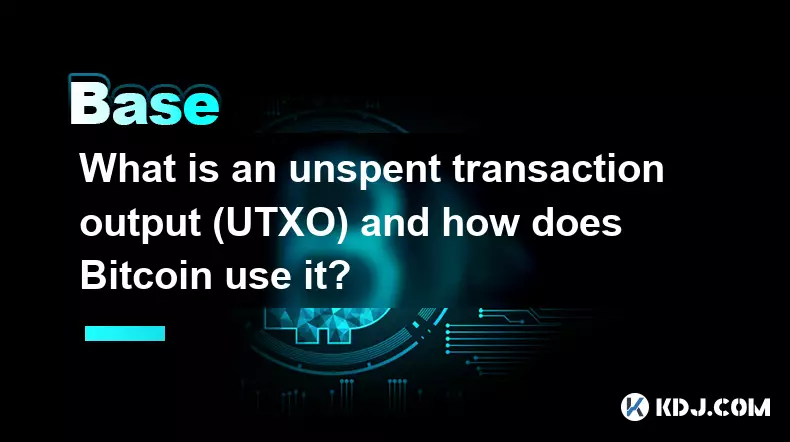-
 bitcoin
bitcoin $94896.319736 USD
-0.39% -
 ethereum
ethereum $3130.546781 USD
-0.60% -
 tether
tether $0.999368 USD
-0.10% -
 xrp
xrp $2.232415 USD
1.03% -
 bnb
bnb $931.833054 USD
0.53% -
 solana
solana $138.573946 USD
-0.08% -
 usd-coin
usd-coin $0.999844 USD
-0.08% -
 tron
tron $0.292320 USD
-0.61% -
 dogecoin
dogecoin $0.159558 USD
-1.12% -
 cardano
cardano $0.489320 USD
-1.89% -
 hyperliquid
hyperliquid $38.634250 USD
0.58% -
 zcash
zcash $700.952791 USD
3.30% -
 bitcoin-cash
bitcoin-cash $486.511218 USD
-3.00% -
 chainlink
chainlink $13.831174 USD
-1.13% -
 unus-sed-leo
unus-sed-leo $9.209054 USD
0.47%
What is a public blockchain versus a private blockchain?
Public blockchains like Bitcoin and Ethereum offer open, decentralized networks ideal for DeFi and NFTs, while private blockchains provide controlled, efficient systems suited for enterprise use in regulated industries.
Nov 16, 2025 at 01:40 pm

Understanding Public Blockchains
1. A public blockchain is a decentralized network that allows anyone to join, participate, and validate transactions without requiring permission from a central authority. These networks are open-source, meaning their code is accessible to everyone for review and contribution.
2. Transactions on a public blockchain are transparent and visible to all participants. This transparency ensures accountability and trust, as each transaction is recorded on an immutable ledger that cannot be altered retroactively.
3. Public blockchains rely on consensus mechanisms such as Proof of Work (PoW) or Proof of Stake (PoS) to validate blocks and secure the network. Miners or validators are typically rewarded with native cryptocurrency tokens for their efforts.
4. Bitcoin and Ethereum are prime examples of public blockchains that have gained widespread adoption in the crypto ecosystem. Their openness fosters innovation, enabling developers to build decentralized applications (dApps) and smart contracts freely.
5. Because they are permissionless, public blockchains prioritize decentralization and censorship resistance over speed and privacy, which can lead to slower transaction processing times and higher fees during peak usage periods.
Exploring Private Blockchains
1. A private blockchain operates under the control of a single organization or consortium, restricting access to authorized participants only. Entry into the network requires explicit permission, making it a permissioned system.
2. These blockchains are often used by enterprises seeking the benefits of distributed ledger technology while maintaining control over data privacy and governance. They allow companies to streamline internal processes, enhance traceability, and reduce operational costs.
3. Consensus in private blockchains is typically achieved through more efficient mechanisms like Practical Byzantine Fault Tolerance (PBFT) or Raft, as the number of validating nodes is limited and known in advance.
4. Private blockchains offer faster transaction speeds and greater scalability compared to public alternatives due to reduced network congestion and fewer validation requirements. This makes them suitable for high-volume enterprise applications such as supply chain tracking or interbank settlements.
5. However, the centralized nature of private blockchains reduces their resistance to censorship and introduces potential points of failure if the controlling entity becomes compromised or untrustworthy.
Differences in Use Cases and Governance
1. Public blockchains are ideal for applications where trustlessness and global accessibility are paramount, such as cryptocurrencies, decentralized finance (DeFi), and non-fungible tokens (NFTs).
2. Private blockchains are better suited for regulated industries like banking, healthcare, and logistics, where compliance, data confidentiality, and regulatory oversight are critical.
3. Governance models differ significantly: public blockchains often rely on community-driven decision-making through proposals and voting, whereas private blockchains follow traditional corporate hierarchies.
4. The choice between public and private blockchains depends on the specific needs of the project, including desired levels of transparency, control, and scalability. Hybrid models combining elements of both are also emerging to balance these trade-offs.
5. Interoperability solutions are being developed to enable communication between public and private chains, allowing organizations to leverage the strengths of both architectures within a unified framework.
Frequently Asked Questions
Can a private blockchain be converted into a public one?Technically, converting a private blockchain to a public one involves opening node access, modifying consensus rules, and making the codebase open-source. However, this transition requires careful planning to ensure security and network stability.
Are transactions on private blockchains secure?Private blockchains can be highly secure due to controlled access and known validators. However, their security model differs from public chains, relying more on organizational trust than cryptographic game theory.
Do private blockchains use cryptocurrency?Most private blockchains do not require native cryptocurrencies. Instead, they may use tokens internally for accounting or access control, but these are not traded publicly like Bitcoin or Ether.
Is mining possible on a private blockchain?Mining is generally unnecessary in private blockchains because consensus is achieved through trusted validators rather than competitive proof-of-work. Alternative methods are used to confirm transactions efficiently.
Disclaimer:info@kdj.com
The information provided is not trading advice. kdj.com does not assume any responsibility for any investments made based on the information provided in this article. Cryptocurrencies are highly volatile and it is highly recommended that you invest with caution after thorough research!
If you believe that the content used on this website infringes your copyright, please contact us immediately (info@kdj.com) and we will delete it promptly.
- Cardano Whale's $6M Swap Loss: A DeFi Cautionary Tale
- 2025-11-17 23:25:02
- Bybit, LBTC, and On-Chain Earn: Diving into the Future of Bitcoin Staking
- 2025-11-17 23:35:02
- Beetz, Oracle, Answer 2025: Cracking the Crypto Quiz Craze
- 2025-11-18 00:15:01
- Bitcoin's Legal Achilles Heel: Nick Szabo Sounds the Alarm
- 2025-11-17 23:15:01
- Stablecoins Take Center Stage: Revolutionizing Cross-Border Trading in Africa
- 2025-11-17 21:40:02
- Navigating the Crypto Market: $HUGS Token vs. Selling Fear
- 2025-11-17 22:10:02
Related knowledge

What is the difference between a transparent and a shielded transaction?
Nov 10,2025 at 05:59pm
Understanding Transparent Transactions in Cryptocurrency1. Transparent transactions are the standard form of transaction on most public blockchains li...

What is a "crypto airdrop farmer" and what strategies do they use?
Nov 09,2025 at 03:39pm
What Is a Crypto Airdrop Farmer?1. A crypto airdrop farmer is an individual who actively participates in blockchain projects to qualify for free token...

What is an unspent transaction output (UTXO) and how does Bitcoin use it?
Nov 12,2025 at 01:40am
Understanding the Concept of Unspent Transaction Output (UTXO)1. An Unspent Transaction Output, commonly referred to as UTXO, is a fundamental compone...

What is a "governance attack" and how can a DAO be compromised?
Nov 14,2025 at 05:59am
Understanding Governance Attacks in Decentralized Autonomous Organizations1. A governance attack occurs when an individual or group gains disproportio...

How do you track a crypto portfolio across multiple wallets and chains?
Nov 12,2025 at 04:19pm
The Evolution of Decentralized Exchanges in the Crypto Ecosystem1. Decentralized exchanges (DEXs) have transformed how users trade digital assets by r...

What is a "rug pull" clause in a smart contract and how can you spot it?
Nov 14,2025 at 11:40pm
Understanding the Concept of a Rug Pull in Decentralized Finance1. A rug pull refers to a malicious act in the cryptocurrency space where developers a...

What is the difference between a transparent and a shielded transaction?
Nov 10,2025 at 05:59pm
Understanding Transparent Transactions in Cryptocurrency1. Transparent transactions are the standard form of transaction on most public blockchains li...

What is a "crypto airdrop farmer" and what strategies do they use?
Nov 09,2025 at 03:39pm
What Is a Crypto Airdrop Farmer?1. A crypto airdrop farmer is an individual who actively participates in blockchain projects to qualify for free token...

What is an unspent transaction output (UTXO) and how does Bitcoin use it?
Nov 12,2025 at 01:40am
Understanding the Concept of Unspent Transaction Output (UTXO)1. An Unspent Transaction Output, commonly referred to as UTXO, is a fundamental compone...

What is a "governance attack" and how can a DAO be compromised?
Nov 14,2025 at 05:59am
Understanding Governance Attacks in Decentralized Autonomous Organizations1. A governance attack occurs when an individual or group gains disproportio...

How do you track a crypto portfolio across multiple wallets and chains?
Nov 12,2025 at 04:19pm
The Evolution of Decentralized Exchanges in the Crypto Ecosystem1. Decentralized exchanges (DEXs) have transformed how users trade digital assets by r...

What is a "rug pull" clause in a smart contract and how can you spot it?
Nov 14,2025 at 11:40pm
Understanding the Concept of a Rug Pull in Decentralized Finance1. A rug pull refers to a malicious act in the cryptocurrency space where developers a...
See all articles










































































